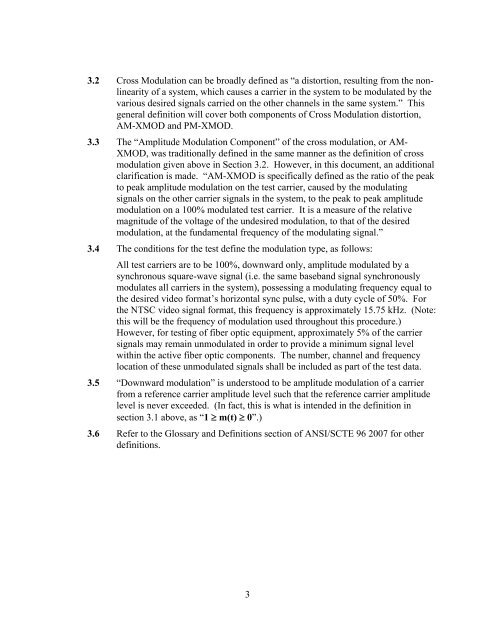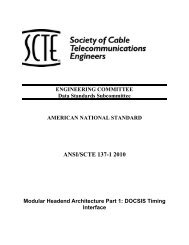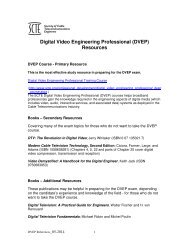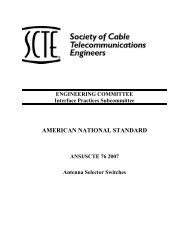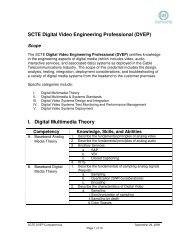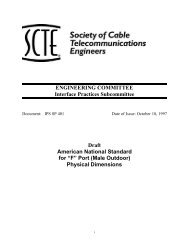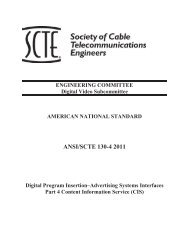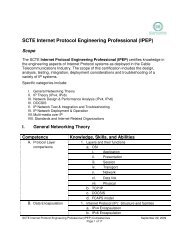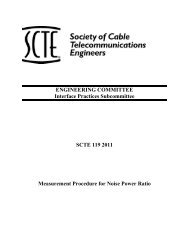SCTE IPS Template, Rev 2
SCTE IPS Template, Rev 2
SCTE IPS Template, Rev 2
- No tags were found...
You also want an ePaper? Increase the reach of your titles
YUMPU automatically turns print PDFs into web optimized ePapers that Google loves.
3.2 Cross Modulation can be broadly defined as “a distortion, resulting from the nonlinearityof a system, which causes a carrier in the system to be modulated by thevarious desired signals carried on the other channels in the same system.” Thisgeneral definition will cover both components of Cross Modulation distortion,AM-XMOD and PM-XMOD.3.3 The “Amplitude Modulation Component” of the cross modulation, or AM-XMOD, was traditionally defined in the same manner as the definition of crossmodulation given above in Section 3.2. However, in this document, an additionalclarification is made. “AM-XMOD is specifically defined as the ratio of the peakto peak amplitude modulation on the test carrier, caused by the modulatingsignals on the other carrier signals in the system, to the peak to peak amplitudemodulation on a 100% modulated test carrier. It is a measure of the relativemagnitude of the voltage of the undesired modulation, to that of the desiredmodulation, at the fundamental frequency of the modulating signal.”3.4 The conditions for the test define the modulation type, as follows:All test carriers are to be 100%, downward only, amplitude modulated by asynchronous square-wave signal (i.e. the same baseband signal synchronouslymodulates all carriers in the system), possessing a modulating frequency equal tothe desired video format’s horizontal sync pulse, with a duty cycle of 50%. Forthe NTSC video signal format, this frequency is approximately 15.75 kHz. (Note:this will be the frequency of modulation used throughout this procedure.)However, for testing of fiber optic equipment, approximately 5% of the carriersignals may remain unmodulated in order to provide a minimum signal levelwithin the active fiber optic components. The number, channel and frequencylocation of these unmodulated signals shall be included as part of the test data.3.5 “Downward modulation” is understood to be amplitude modulation of a carrierfrom a reference carrier amplitude level such that the reference carrier amplitudelevel is never exceeded. (In fact, this is what is intended in the definition insection 3.1 above, as “1 ≥ m(t) ≥ 0”.)3.6 Refer to the Glossary and Definitions section of ANSI/<strong>SCTE</strong> 96 2007 for otherdefinitions.3


